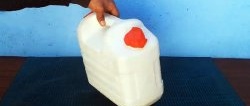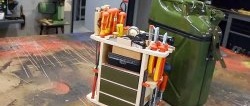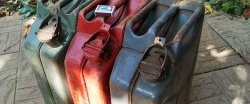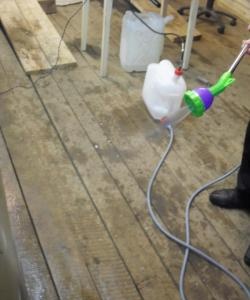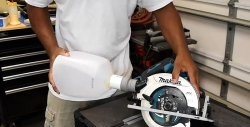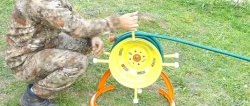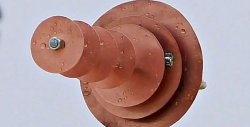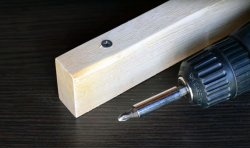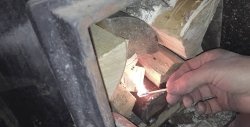Just a great use for a canister: a case for a watering hose
Over the years, products lose their functionality and become unsuitable for their intended purpose. For example, no matter how much you restore an old rusty metal canister, it is no longer suitable for storing fuel - you can’t renew it from the inside.
But don’t rush to throw it away, why not try using it under something else, say, under a watering hose. What will we need for this?
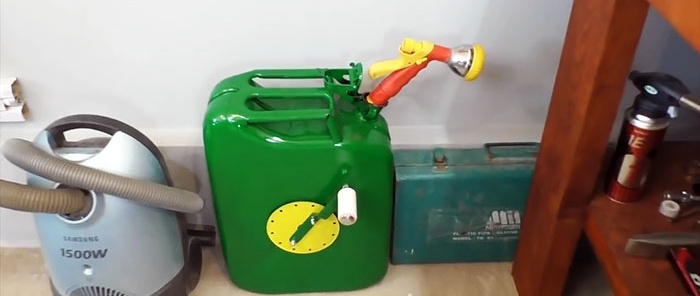
In addition to the iron canister, we must prepare:
To work we will need the following equipment and tools:
First, we will put the canister in order, then we will make the necessary components and parts, and at the end we will assemble them.
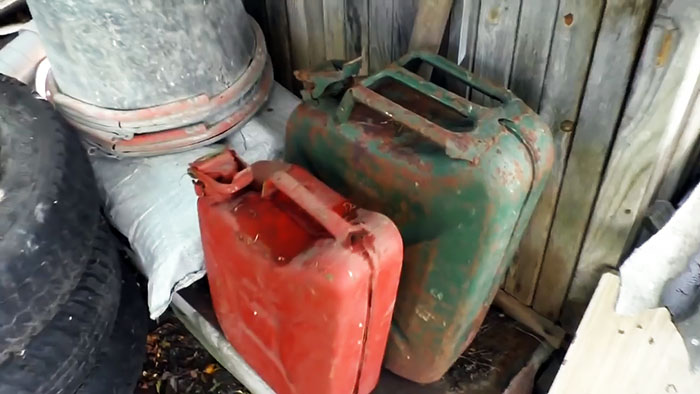
Peeling paint and rust stains can be removed with a wire brush. But it’s easier, faster and easier to do this tedious job with the help of an angle grinder and two wire brushes - a cup and a disk.
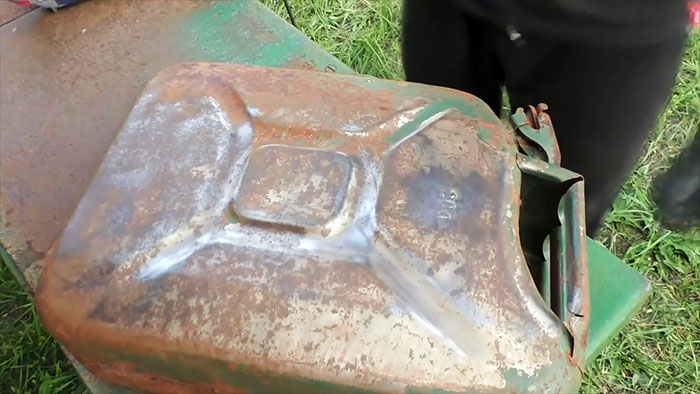
Using a metal square and a marker, mark the center of the canister on both sides, mark it and, placing the leg of a compass there, draw circles of the required diameter.
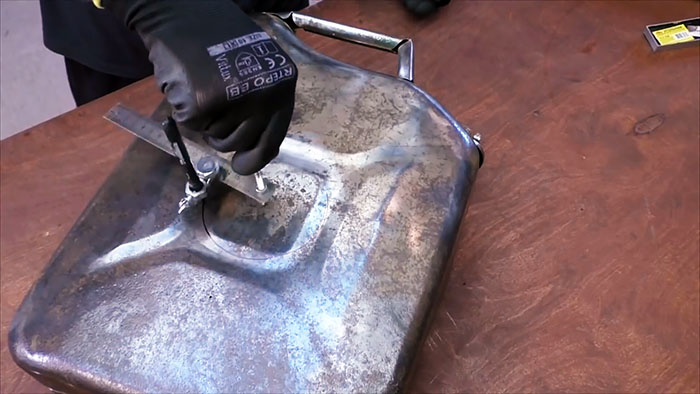
Having made a drill along the hole on the drawn circles, use a jigsaw to cut out circles according to the markings.
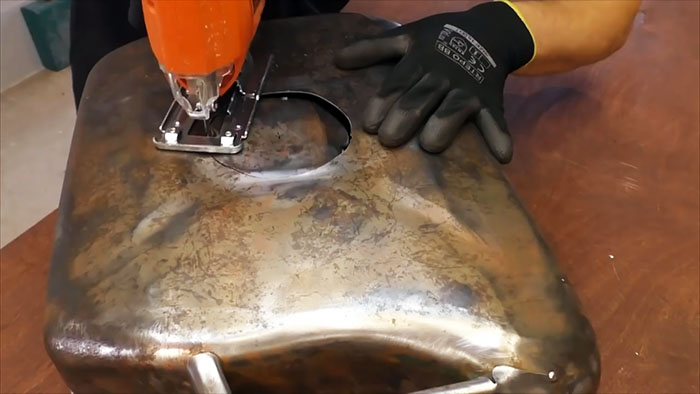
Carefully clean the edges of the resulting holes with sandpaper.
We hang the canister on a hook and first cover its entire surface with a primer, and after it dries, with paint from aerosol cans.
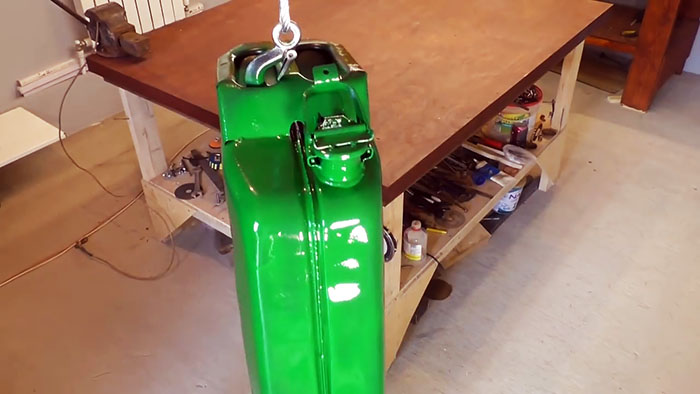
While the paint is drying, let’s work on the “filling” for the canister - a reel or drum for winding the hose. Using a grinder, a knife and sandpaper, we prepare the drum parts from a plastic pipe, a cross and a plug. We cut one pipe blank along the generatrix so that it is possible to insert another of the same diameter into it.
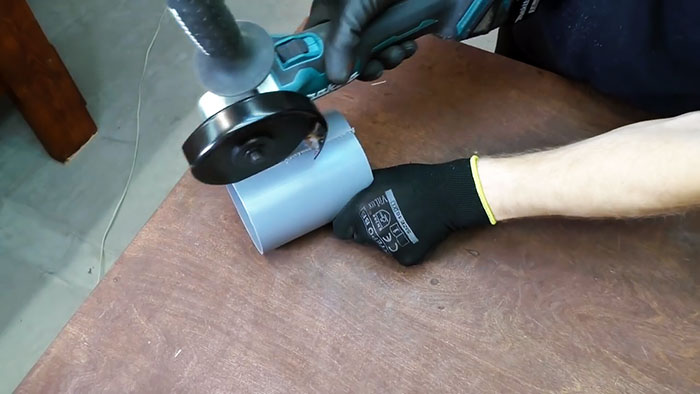
Apply glue to the side of the plug and insert it into the pipe blank with a cut.
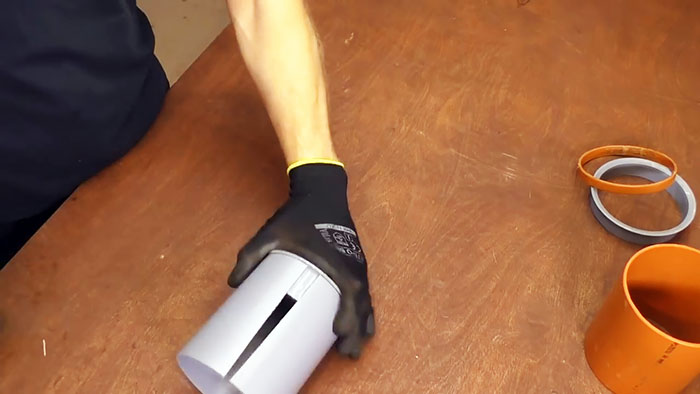
Since the diameters of these two parts coincide, a longitudinal slot is formed in the pipe, and another of the same diameter can be inserted into it, the sides of which are also covered with glue.
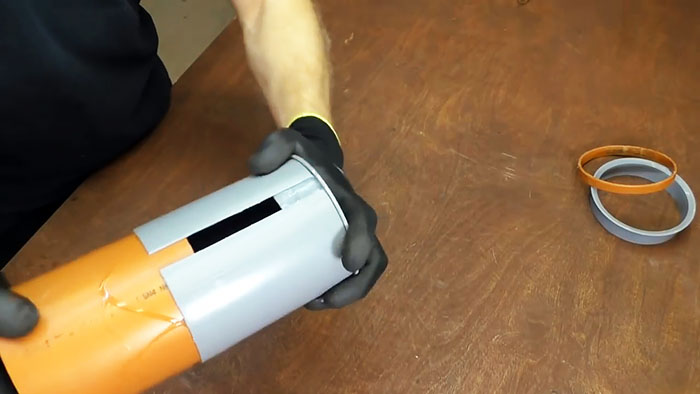
We do not bring the inner pipe a little to the end of the plug, but we fill this place and the entire length of the groove with glue from a glue gun.
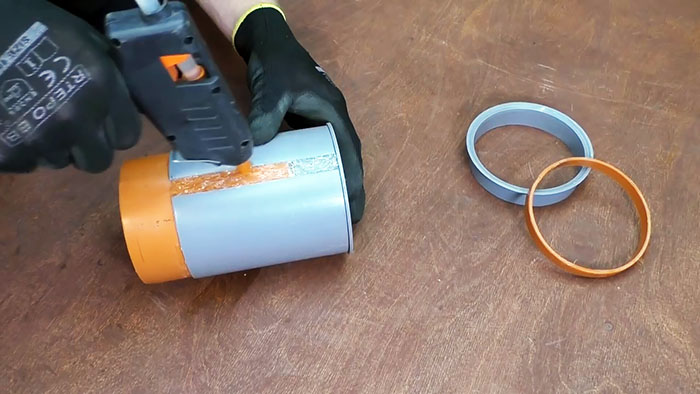
Later, on the protruding part of the inner pipe, we will first put on a flanged ring cut from a tee, and then a simple ring cut from a smooth pipe.
We mark the metal disk for drilling two holes located at the same diameter in the center of the circular strip between the edge of the disk and the mounting hole.
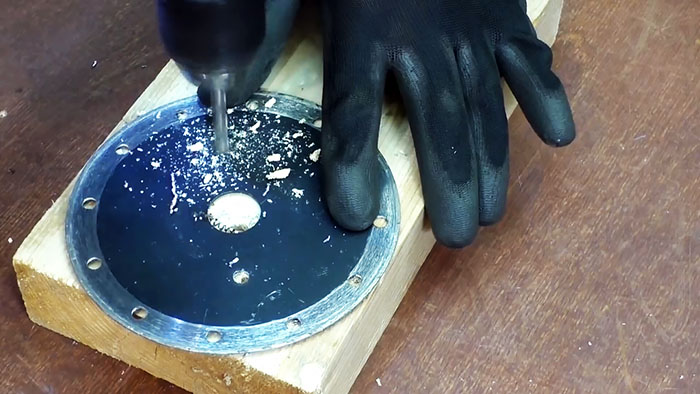
Use a drill to drill the holes marked in the disk.
We mark the steel strip. From one edge we determine the centers of two holes, similar to the holes in the disk, and one more - from the other edge of the strip.
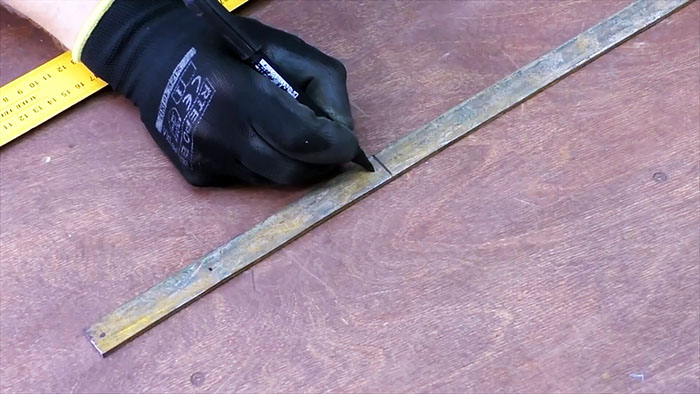
Holding the strip in a vice, cut it and drill holes according to the previously applied markings, adding oil to the drilling sites.
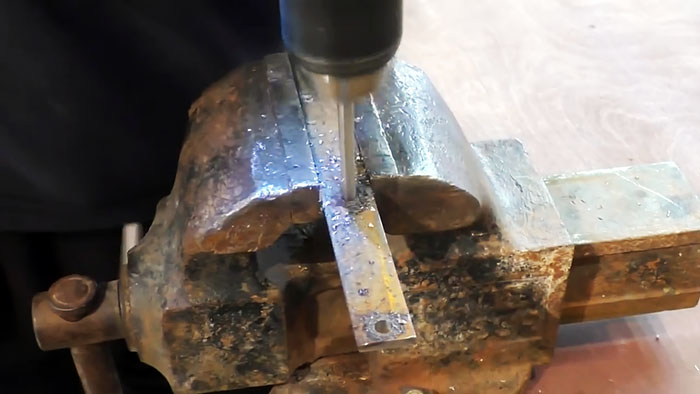
We bend the strip, clamped in a vice, with a hammer in the center so that its parts are parallel, but in different planes.
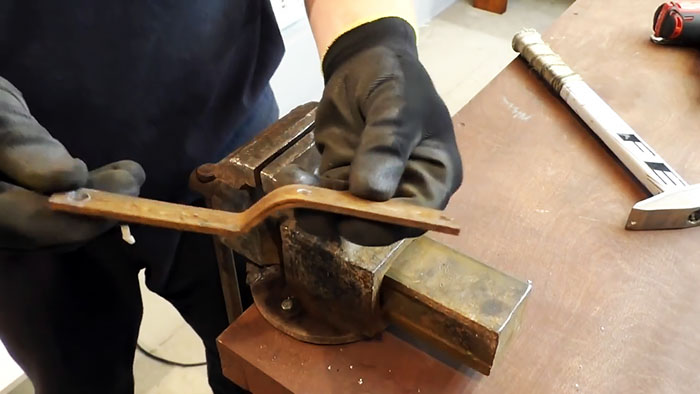
We paint the stripe and disc from an aerosol can.
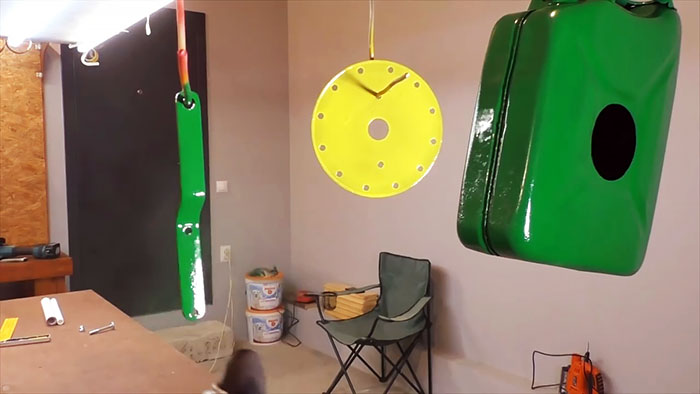
Using scissors for working with plastic, we cut two identical pieces in length from two pipe blanks of different diameters.
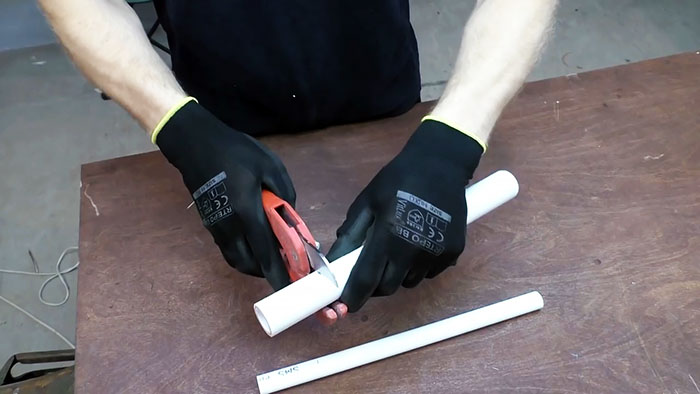
We round off the ends of the plastic tubes using mechanical sandpaper. Now all the parts and components of our homemade product are ready and we can proceed to the next stage of work.
We start this stage with the hose reel. To do this, insert bolts into the holes of the plug, put a disk and a handle on them in sequence and secure with nuts, screwing and tightening them with wrenches.
On the side of the double pipe, closer to the metal disk, using a drill with a feather drill, we drill a hole commensurate with the diameter of the hose.
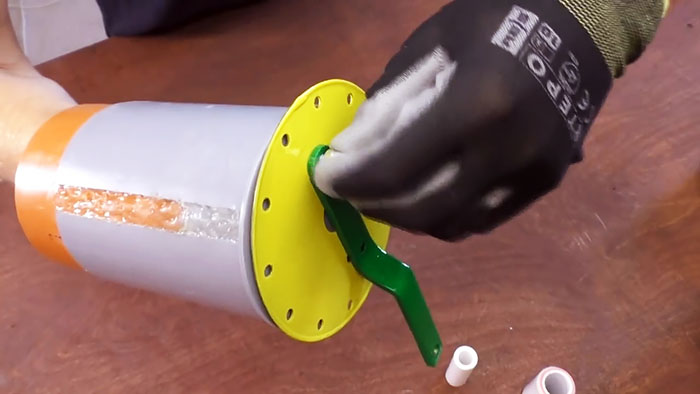
We first put a smaller and then a larger plastic tube on the bolt with a round head, and fasten them to the plate, passing the end of the bolt into the hole and tightening the nut on the other side of the plate.

We insert the assembled assembly into the hole previously made in the center of the canister until the steel disk rests against its side wall.
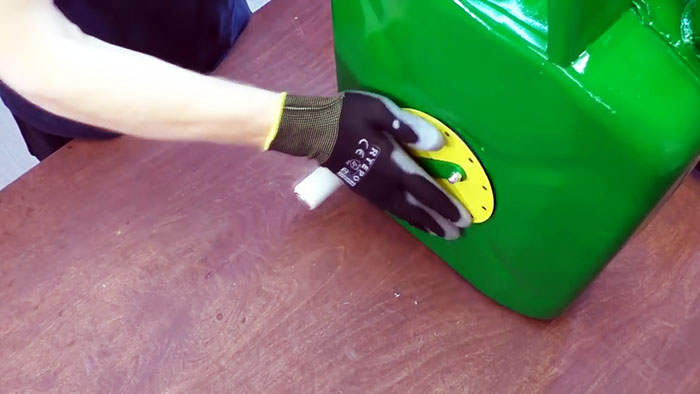
We install locking rings on the end of the plastic pipe on the other side of the canister and screw the outer one with three screws to the plastic pipe.
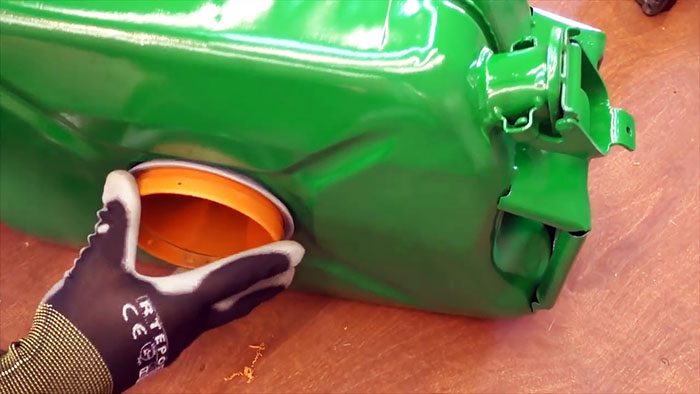
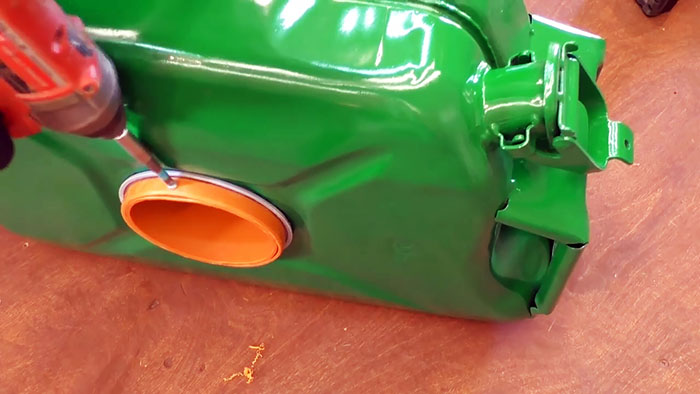
Now the drum, rotating freely around its longitudinal axis, cannot move either to the left or to the right.
The assembly is basically complete and you can test our homemade product in “idle” mode. We rotate the drum by the handle and make sure that the process proceeds smoothly, without jamming or jerking.
Let's start practical tests.
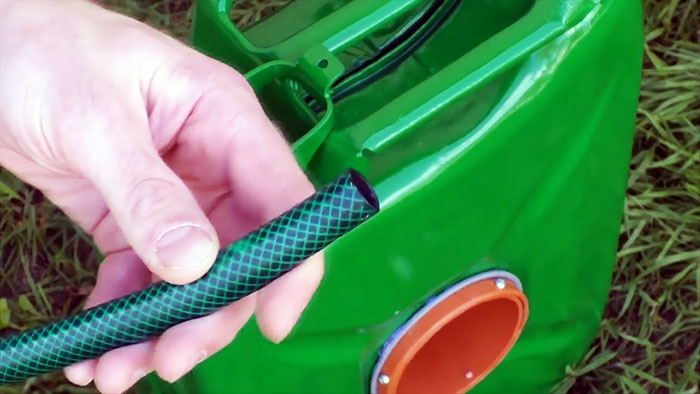
We push the hose through the neck of the canister and the hole in the drum until its end comes out of the open end of the reel.
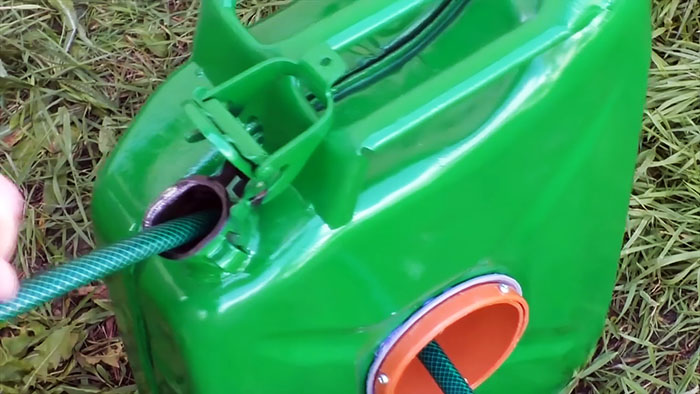
We begin to rotate the handle in any direction, winding the hose onto the drum, which can be seen from the hose, which is pulled into the canister through the neck.
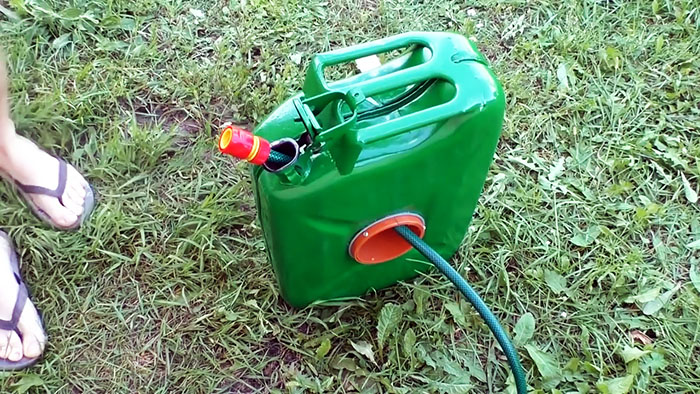
Unwinding the hose, if necessary, is also easy - just pull its end protruding from the neck outward with a little effort.
Moreover, it is not necessary to unwind the entire hose if you can get by with only part of it. At the same time, water still comes out of the watering can under pressure, which indicates that the hose is not pressed or broken anywhere.
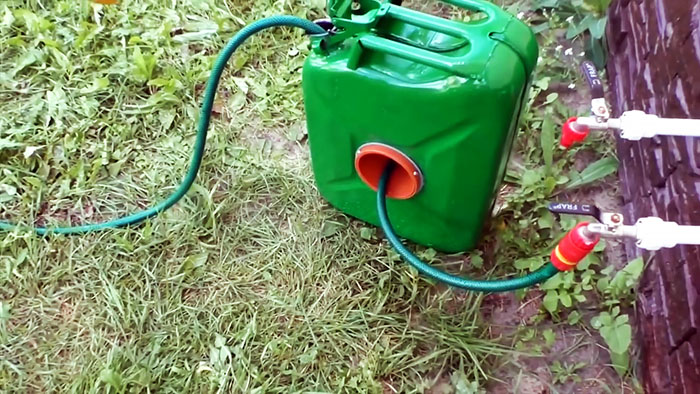
After finishing watering, we collect the hose in our makeshift case, which will not take up much space and will ensure its safety for many years.
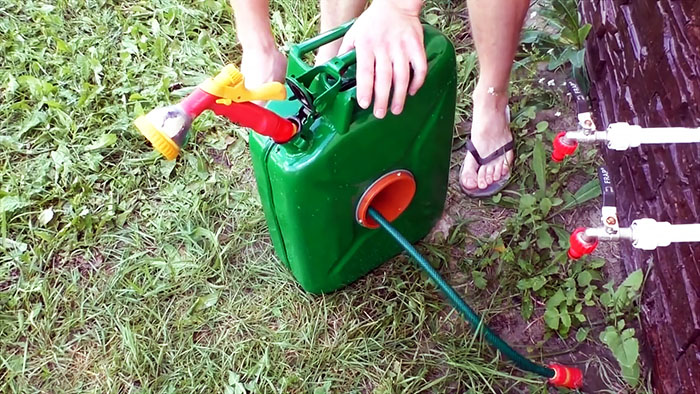
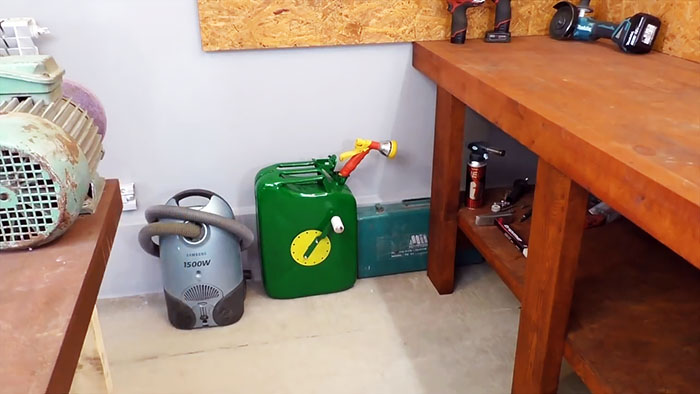
But don’t rush to throw it away, why not try using it under something else, say, under a watering hose. What will we need for this?

Will need
In addition to the iron canister, we must prepare:
- pieces of plastic pipes, plug and crosspiece;
- metal disk;
- steel plate;
- primer and paint;
- glue and glue gun;
- bolt, nut and screws;
- watering hose.
To work we will need the following equipment and tools:
- vice, hammer and center punch;
- grinder with equipment;
- square-ruler, compass and marker;
- drill with twist and feather drill;
- jigsaw;
- knife and scissors for working with plastic;
- mechanical emery and sandpaper.
Algorithm for transforming a canister into a hose case
First, we will put the canister in order, then we will make the necessary components and parts, and at the end we will assemble them.

Restoration and preparation of an old canister
Peeling paint and rust stains can be removed with a wire brush. But it’s easier, faster and easier to do this tedious job with the help of an angle grinder and two wire brushes - a cup and a disk.

Using a metal square and a marker, mark the center of the canister on both sides, mark it and, placing the leg of a compass there, draw circles of the required diameter.

Having made a drill along the hole on the drawn circles, use a jigsaw to cut out circles according to the markings.

Carefully clean the edges of the resulting holes with sandpaper.
We hang the canister on a hook and first cover its entire surface with a primer, and after it dries, with paint from aerosol cans.

Making a hose reel
While the paint is drying, let’s work on the “filling” for the canister - a reel or drum for winding the hose. Using a grinder, a knife and sandpaper, we prepare the drum parts from a plastic pipe, a cross and a plug. We cut one pipe blank along the generatrix so that it is possible to insert another of the same diameter into it.

Apply glue to the side of the plug and insert it into the pipe blank with a cut.

Since the diameters of these two parts coincide, a longitudinal slot is formed in the pipe, and another of the same diameter can be inserted into it, the sides of which are also covered with glue.

We do not bring the inner pipe a little to the end of the plug, but we fill this place and the entire length of the groove with glue from a glue gun.

Later, on the protruding part of the inner pipe, we will first put on a flanged ring cut from a tee, and then a simple ring cut from a smooth pipe.
We mark the metal disk for drilling two holes located at the same diameter in the center of the circular strip between the edge of the disk and the mounting hole.

Use a drill to drill the holes marked in the disk.
We mark the steel strip. From one edge we determine the centers of two holes, similar to the holes in the disk, and one more - from the other edge of the strip.

Holding the strip in a vice, cut it and drill holes according to the previously applied markings, adding oil to the drilling sites.

We bend the strip, clamped in a vice, with a hammer in the center so that its parts are parallel, but in different planes.

We paint the stripe and disc from an aerosol can.

Using scissors for working with plastic, we cut two identical pieces in length from two pipe blanks of different diameters.

We round off the ends of the plastic tubes using mechanical sandpaper. Now all the parts and components of our homemade product are ready and we can proceed to the next stage of work.
Assembling the hose case
We start this stage with the hose reel. To do this, insert bolts into the holes of the plug, put a disk and a handle on them in sequence and secure with nuts, screwing and tightening them with wrenches.
On the side of the double pipe, closer to the metal disk, using a drill with a feather drill, we drill a hole commensurate with the diameter of the hose.

We first put a smaller and then a larger plastic tube on the bolt with a round head, and fasten them to the plate, passing the end of the bolt into the hole and tightening the nut on the other side of the plate.

We insert the assembled assembly into the hole previously made in the center of the canister until the steel disk rests against its side wall.

We install locking rings on the end of the plastic pipe on the other side of the canister and screw the outer one with three screws to the plastic pipe.


Now the drum, rotating freely around its longitudinal axis, cannot move either to the left or to the right.
Homemade testing
The assembly is basically complete and you can test our homemade product in “idle” mode. We rotate the drum by the handle and make sure that the process proceeds smoothly, without jamming or jerking.
Let's start practical tests.

We push the hose through the neck of the canister and the hole in the drum until its end comes out of the open end of the reel.

We begin to rotate the handle in any direction, winding the hose onto the drum, which can be seen from the hose, which is pulled into the canister through the neck.

Unwinding the hose, if necessary, is also easy - just pull its end protruding from the neck outward with a little effort.
Moreover, it is not necessary to unwind the entire hose if you can get by with only part of it. At the same time, water still comes out of the watering can under pressure, which indicates that the hose is not pressed or broken anywhere.

After finishing watering, we collect the hose in our makeshift case, which will not take up much space and will ensure its safety for many years.


Watch the video
Similar master classes
Particularly interesting
Comments (0)

